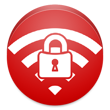- Information of Turbo Wifi APK
- What the app claims to do (high level)
- Why this kind of vulnerability matters
- Legal & ethical considerations
- How to safely check your own Wi-Fi security
- Practical steps to protect your router and Wi-Fi (detailed checklist)
- What to do if you suspect your router is vulnerable or was compromised
- Responsible disclosure and reporting
- Conclusion
Turbo Wifi is described as an app that claims to test how safe a Wi-Fi password is by exploiting weaknesses in routers' default password generation - specifically targeting a class of routers distributed by some ISPs. While tools that help people check their own network security exist and can be legitimate when used ethically, descriptions like this raise serious legal and safety flags because the same techniques can be used to access other people's networks without permission.
This article explains, in plain English and without providing exploit instructions, how such an app is supposed to work at a high level, why the underlying vulnerability is dangerous, and - most importantly - what individual users and small businesses should do to secure their Wi-Fi and stay legal.
What the app claims to do (high level)
-
From its main interface, it scans for nearby Wi-Fi networks and lists them.
-
For networks it flags as potentially vulnerable, it attempts to predict or generate the router's default password and tries to connect.
-
The tool is marketed as a way to "test" the strength of your Wi-Fi password and discover weak (default) credentials.
Important: that description is a high-level summary only. I will not provide details on how to construct, tune, or run attacks or password-generation algorithms.
Why this kind of vulnerability matters
-
Default credentials are predictable. Many routers ship with predictable default SSIDs and default admin or Wi-Fi passwords derived from serial numbers, MAC addresses, or simple algorithms. If an attacker can reproduce that algorithm, they may be able to gain access without ever guessing a random passphrase.
-
Scale and automation magnify risk. An automated tool can scan many networks quickly. Even a vulnerability that affects a small percentage of routers becomes dangerous when exploitation is automated.
-
Access consequences. If an attacker gains Wi-Fi or administrative access, they can intercept traffic, pivot to devices on the network, change DNS settings, inject malicious content, or use the connection for other criminal activities - and the owner may not notice.
-
ISP-supplied hardware. Devices preconfigured by ISPs for ease of installation are convenient but can also ship with identical or easily derived credentials across many units - a major security weakness.
Legal & ethical considerations
-
Unauthorized access is illegal. Attempting to access Wi-Fi networks, or otherwise bypassing authentication, without explicit, documented permission is unlawful in most jurisdictions and can lead to criminal charges and civil liability.
-
Ethical testing requires consent. If you want to test a network you do not own, get written permission (scope, duration, and methods) from the owner or operator. For enterprises, use a formal penetration-testing agreement or a bug bounty program.
-
Responsible disclosure. If you discover a vulnerability in ISP equipment or router firmware, report it responsibly to the vendor or ISP - do not publish exploit code or use it against other networks.
How to safely check your own Wi-Fi security
If your goal is to confirm your own network's safety, do this the safe, legal way:
-
Work only on networks you own or have written permission to test.
-
Create a test environment: keep a separate lab or guest router you can experiment with rather than your production home network.
-
Use non-destructive tools: Wi-Fi analyzers and network scanners that simply observe signal strength, channels, and encryption types are useful and safe. Avoid tools that attempt to bypass authentication unless you are explicitly authorized.
-
Hire professionals for in-depth testing: trained penetration testers have both the expertise and legal frameworks to perform intrusive testing and provide remediation guidance.
-
Document everything: if you authorize testing, keep records of permissions, scope, and findings.
Practical steps to protect your router and Wi-Fi (detailed checklist)
Below is a prioritized list of defensive actions every router owner should take. These are safe, practical, and do not enable exploitation.
Immediate steps (do these now)
-
Change default admin credentials. Replace any preconfigured username/password used to log into the router's admin interface with a strong, unique password. Do not leave the admin username as the default (e.g., "admin") if the router allows changing it.
-
Change the Wi-Fi passphrase. Use a long passphrase (at least 12-16 characters or more) made of unrelated words, or a random string. Avoid short numeric PINs and any guessable sequence.
-
Use strong encryption. Set your network to WPA2-Personal (AES) or - better - WPA3 if the router and client devices support it. Do not use WEP or WPA-TKIP.
-
Disable WPS (Wi-Fi Protected Setup). WPS PIN mode is frequently vulnerable and should be turned off.
Configuration hardening
-
Firmware updates. Regularly check for and install firmware updates from your router vendor or ISP. Updates often patch security bugs.
-
Disable remote management. Turn off remote admin access from the WAN (internet) side unless you explicitly need it and have secured it (e.g., via VPN).
-
Use a unique SSID. Avoid using model names or ISP defaults that reveal the router type (which can reveal known vulnerabilities). A unique SSID helps obscure the device fingerprint.
-
Create a guest network. Put IoT devices, visitor devices, and unknown devices on an isolated guest SSID with limited access to your main LAN.
-
Enable the router firewall. Keep the router's built-in firewall active and use any advanced firewall features if available.
-
Change default DNS if needed. Consider using trusted DNS resolvers and check that the router's DNS settings haven't been tampered with.
Monitoring and ongoing practices
-
Check connected devices regularly. Review the list of devices attached to your network and remove unknown devices.
-
Review logs. Look at the router's system logs for unusual activity. If you don't understand logs, capture and share them with professional help.
-
Rotate passwords periodically. Change Wi-Fi and admin passwords from time to time, especially after guests or device turnover.
-
Use network segmentation. For home offices, separate work devices from entertainment/IoT devices.
-
Use a VPN for sensitive traffic. A reputable VPN on devices (or on the router itself) can reduce risks when using untrusted networks.
Advanced options for power users
-
Run intrusion detection. Consider a home IDS/IPS appliance or router firmware that supports it if you have sensitive needs.
-
Replace outdated hardware. If a router no longer receives security updates from the vendor, replace it with a supported model.
-
Use manufacturer-provided security features. Some modern routers offer automatic update features, device isolation, and secure cloud management - evaluate and use these carefully.
What to do if you suspect your router is vulnerable or was compromised
-
Disconnect affected devices from Wi-Fi.
-
Factory reset the router (but make sure you have your ISP login details or configuration info to restore service).
-
Change admin and Wi-Fi passwords immediately after reset.
-
Update firmware to the latest stable version.
-
Check DNS and port-forwarding settings for unauthorized changes.
-
If the device is ISP-supplied, contact the ISP - ask for guidance and whether they can replace or re-provision the unit.
-
If you believe a crime occurred, report to the proper authorities and preserve logs and evidence for investigators.
Responsible disclosure and reporting
If you discover a pattern or vulnerability affecting many users (for example, a predictable default password scheme in ISP-supplied routers), follow responsible disclosure best practices:
-
Report privately to the vendor or ISP with details and proof of concept that does not include exploit code.
-
Give the vendor reasonable time to fix the issue before public disclosure.
-
If you are uncertain how to report, contact a security researcher community or use established vulnerability reporting channels.
Conclusion
Descriptions of apps that "generate default passwords" and attempt access to Wi-Fi networks highlight an important security truth: convenience and default configurations can create serious risks. If you own a router, you have several practical and legally safe steps at your disposal to reduce risk dramatically: change defaults, use strong encryption and long passphrases, update firmware, disable insecure features like WPS, and monitor your network.
If your goal is to evaluate your own network's security deeper than the checklist above, the safest, most effective route is to: (1) create an isolated test environment, or (2) hire a qualified professional who will test under a signed authorization and give you a remediation plan. I can help draft a testing authorization form, a step-by-step hardening checklist tailored to your router model (without exploit details), or a template email to your ISP requesting a firmware update or device replacement - tell me which of those you'd like and I'll produce it.









